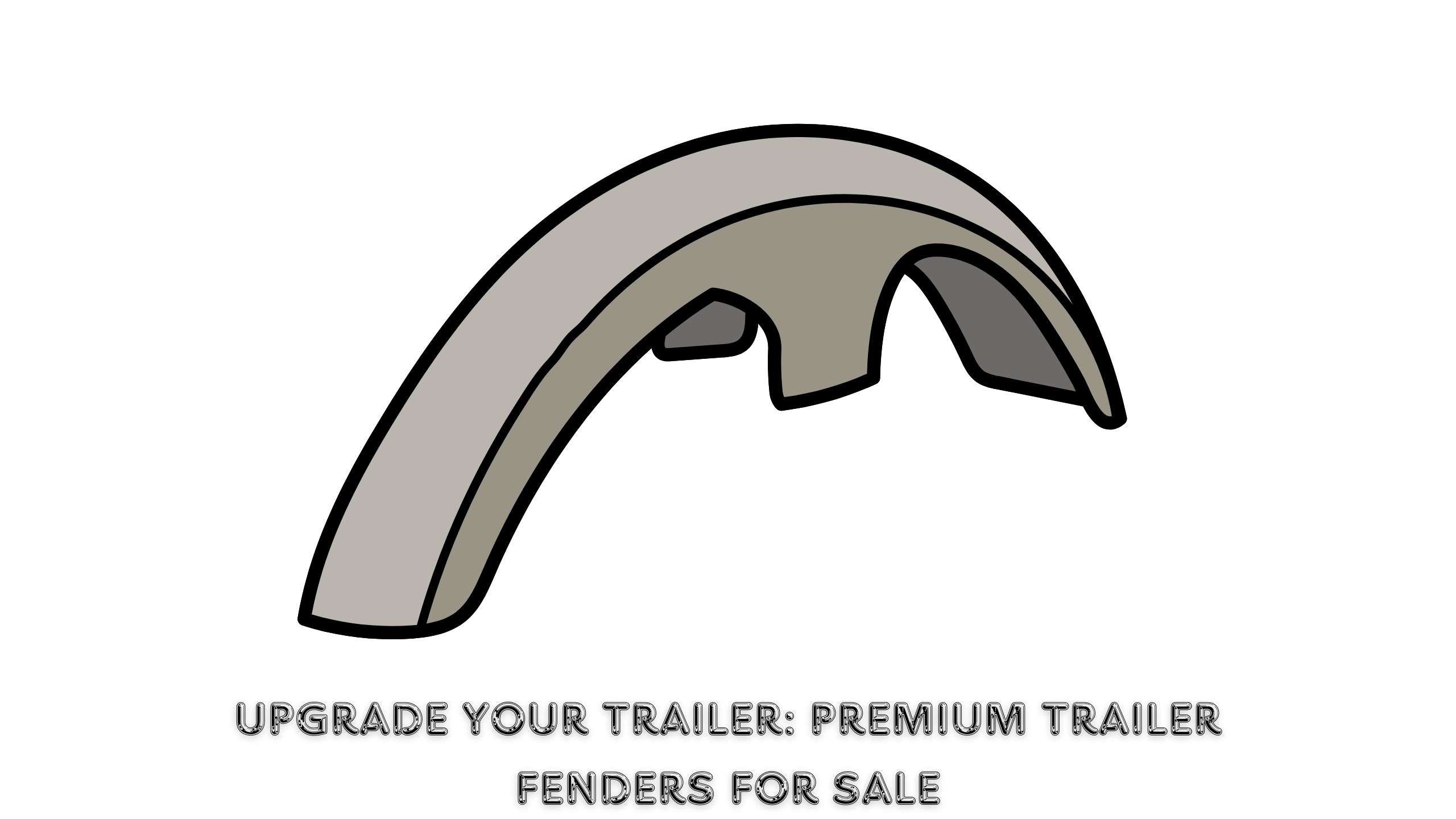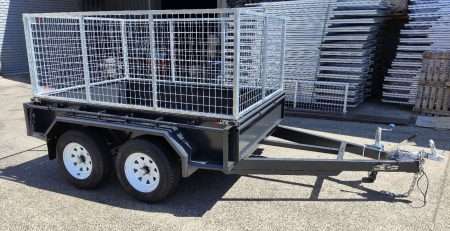
Upgrade Your Trailer: Premium Trailer Fenders for Sale
Understanding Trailer Fenders
When it comes to maintaining and upgrading your trailer, fenders play a crucial role that shouldn’t be overlooked. In this section, we will delve into the purpose of trailer fenders and explore the different types available on the market.
Purpose of Trailer Fenders
Trailer fenders are not just an aesthetic addition to your trailer. They serve a functional purpose, designed to provide a cover over the wheel well of the trailer. This cover prevents the tires from hurling dirt, water, and other road debris into the air, which could potentially harm the trailer, its cargo, or other vehicles on the road.
Moreover, in some states, it’s a legal requirement for trailers to have fenders. These laws are designed to enhance safety on the roads by reducing the spread of road debris and improving visibility for other drivers. For more information on this, you can visit our section on legal requirements for trailer fenders.
Different Types of Fenders
There are several types of trailer fenders available on the market, each designed to suit specific types of trailers and uses. They vary in terms of material, size, design, and functionality. Some of the most common types of trailer fenders include:
- Boat trailer fenders: Specifically designed for boat trailers, these fenders have a unique shape and design to accommodate the size and shape of boat hulls.
- Tandem axle trailer fenders: These are designed for trailers with two axles and provide additional coverage due to the larger wheel area.
- Single-axle trailer fenders: These are suitable for single-axle trailers and are available in a variety of styles and materials.
- Utility trailer fenders: These fenders are designed for utility trailers and are typically robust and durable to withstand heavy-duty use.
In terms of materials, trailer fenders can be made from a variety of materials, including:
- Aluminium trailer fenders: These fenders are lightweight yet strong and are resistant to rust and corrosion.
- Steel trailer fenders: Known for their strength and durability, steel fenders are a great choice for heavy-duty applications.
- Plastic trailer fenders: These are a cost-effective option that are lightweight and easy to install.
- Diamond plate trailer fenders: These fenders have a diamond pattern on the surface, providing extra strength and a rugged, stylish look.
By understanding the different types of trailer fenders available, you can make an informed decision when it comes to upgrading or replacing your existing trailer fenders. Always remember that the right trailer fender not only enhances the aesthetic appeal of your trailer but also serves a crucial functional role in maintaining the safety and integrity of your vehicle.
Legal Requirements for Trailer Fenders
When searching for trailer fenders for sale, it’s crucial to be aware of the legal requirements pertaining to their use. These laws can vary from state to state and are typically enforced to ensure road safety for all users.
Regulations in Different States
While some states require the use of fenders on trailers, others do not. For example, according to a discussion on Steel Soldiers, certain states mandate the use of fenders on trailers, while others are more lenient.
In Ohio, for instance, the law stipulates that any commercial car, trailer, or semitrailer used for the transportation of goods or property, with a gross weight exceeding three tonnes, must be equipped with suitable metal protectors or substantial flexible flaps on the rearmost wheels. These are required to prevent the wheels from throwing dirt, water, or other materials on the windscreens of the following vehicles (Ohio Revised Code).
These protectors or flaps should have a ground clearance of not more than one third of the distance from the centre of the rearmost axle to the centre of the flaps and should be at least as wide as the tyres they are protecting.
Exceptions to the rule
There are, however, exceptions to these regulations. If a vehicle is designed and constructed in a way that accomplishes the requirements mentioned above through means of fenders, body construction, or other means of inclosure, then there is no need for separate protectors or flaps (Ohio Revised Code).
Rear wheels that are not covered at the top by fenders, bodies, or other parts of the vehicle must be covered at the top by protective means extending at least to the center line of the rearmost axle.
This flexibility in the law allows for a variety of trailer designs and configurations to meet legal requirements while also serving the specific needs of the owner. Whether you’re looking for aluminium trailer fenders or plastic trailer fenders, it’s crucial to ensure that they meet both your practical needs and the legal requirements of your state.
Remember, when it comes to trailer fenders, safety and compliance should always be your top priorities.
Buying Guide for Trailer Fenders
If you’re in the market for trailer fenders, it’s essential to know what factors to consider and where to find the best trailer fenders for sale.
Factors to consider
When purchasing trailer fenders, consider the following aspects:
- Material: Trailer fenders come in various materials, including plastic, aluminium, steel, and diamond plate. Plastic fenders are lightweight and resistant to rust, but they may not be as durable as their metal counterparts. Aluminium trailer fenders and steel trailer fenders offer greater durability and strength, while diamond plate trailer fenders provide a rugged and stylish appearance.
- Size: The size of the fender should match the size of your trailer and tires. You’ll find options ranging from single-axle trailer fenders to tandem-axle trailer fenders.
- Installation: Some fenders come with pre-drilled holes for easy installation (Amazon.ca). Ensure the fender you choose aligns with your trailer’s mounting points, or you’re comfortable drilling new ones.
- Price: The cost of trailer fenders can range from $20 to $100, depending on their size and material (Amazon.ca). Set a budget that factors in not just the upfront cost but also long-term durability and maintenance costs.
Where to buy
When it comes to finding the best trailer fenders for sale, there are several reputable online retailers that offer a wide variety of options:
- Walmart offers over 1000 varieties of trailer fenders for sale. Their extensive selection includes everything from utility trailer fenders to boat trailer fenders.
- Amazon.ca is another excellent online marketplace where customers can find trailer fenders in different sizes and materials, such as galvanised steel and plastic.
- For those interested in a more comprehensive selection, our website at Muscle Trailers offers a wide range of trailer fenders. We provide everything from single axle to tandem axle fenders and an assortment of materials to suit your specific needs.
Deciding on the right trailer fenders involves careful consideration of several factors. By understanding the importance of material, size, installation, and price, you can make an informed decision that suits your needs and budget.
Installing trailer fenders
Once you’ve chosen the right fenders for your trailer, the next step is to properly install them. Although the process may seem daunting, with the right tools and instructions, it can be a straightforward task.
Tools Required
Before we get started, it’s important to gather all the necessary tools. The tools required for installing trailer fenders typically include:
- Drill and drill bits
- Wrench or socket set
- Tape measure
- Marker or pencil
- Safety glasses and gloves
Remember, the specific tools may vary depending on the type of trailer fender and the specific installation requirements. Some trailer fenders for sale come with pre-drilled holes for easy installation (Amazon.ca).
Step-by-step installation process
Here’s a simple step-by-step guide on how to install your new trailer fenders:
- Position the Fender: Start by positioning the fender over the wheel. Make sure to centre it both lengthwise and widthwise. The fender should cover the tyre adequately to prevent mud or debris from being thrown onto other vehicles.
- Mark the Drill Holes: Once you’re happy with the position, mark the drill holes using a marker or pencil. The number of holes will depend on the design of your fender.
- Drill the Holes: Put on your safety glasses and gloves, and drill the marked holes. Be sure to use a drill bit that matches the size of your bolts.
- Attach the Fender: Position the fender over the drilled holes and insert the bolts. Secure them with a wrench or socket, ensuring the fender is firmly attached to the trailer.
- Repeat for the Other Side: Once one fender is securely installed, repeat the process for the other side.
Installing trailer fenders yourself can save you time and money. However, if you’re not confident in your abilities, it’s best to seek professional help to ensure the job is done right.
Remember, proper installation of trailer fenders not only enhances the appearance of your trailer but also ensures you’re compliant with state regulations. Now that you know how to install trailer fenders, check out our range of high-quality trailer fenders for sale to find the perfect fit for your trailer.
Maintaining Trailer Fenders
Maintaining your trailer fenders not only enhances the appearance of your trailer but also extends the lifespan of the fenders. Here are some tips on cleaning and maintenance and when you should consider replacing your fenders.
Cleaning and maintenance tips
Regular cleaning of your fenders is crucial to keeping them in good condition. Here’s how you can go about it:
- Use a mild detergent and warm water to wash the fenders. This will help remove dirt and grime that may have accumulated.
- After washing, thoroughly rinse the fenders with clean water to remove any soap residue.
- Dry the fenders using a soft cloth to prevent water spots and streaks.
- Check for any signs of damage, such as cracks or chips. Small damages can be repaired with a suitable filler or adhesive.
It’s also important to conduct regular inspections of your fenders. Look for any signs of wear and tear, such as rust on metal fenders or fading on plastic ones. If you notice any damages, it’s best to address them immediately to prevent further deterioration.
When to Replace Your Fenders
There are several signs that it may be time to replace your fenders:
- Severe Damage: Large cracks, dents, or holes in your fenders are a clear sign that they need to be replaced.
- Rust: If your metal fenders have extensive rust, it might be more cost-effective to replace them rather than try to repair them.
- Fading: Over time, plastic and painted fenders can fade due to exposure to the sun. If the fenders are noticeably discoloured, it might be time for a replacement.
If you find that your fenders need replacing, we have a range of trailer fenders for sale in various materials and styles to suit your needs. Whether you’re looking for boat trailer fenders, tandem axle trailer fenders, aluminium trailer fenders, utility trailer fenders, single axle trailer fenders, diamond plate trailer fenders, plastic trailer fenders, or steel trailer fenders, we’ve got you covered.
By regularly maintaining and promptly replacing your trailer fenders, you help ensure the safety and longevity of your trailer. Happy hauling!
Author
I am Rahatul Ashiq Tamal. Another author of Muscle Trailers. Muscle Trailers is a well-known trailer brand in Sydney, Melbourne & Adelaide

How to Mount a Spare Tire on Your Trailer: A Simple Step-by-Step Guide
Trailer service centers receive over 1 million phone calls and 1.3 million emails each year about trailer maintenance problems....

How to Fix RV Roof Leaks: Simple Roof Leak Detection Guide for Beginners
Did you know DIY RV roof repairs can cost under $50? But undetected leaks could lead to substantially higher repair...

Starting a Food Truck Business in Australia: From Trailer Selection to Launch
The Australian mobile food market has evolved into a billion-dollar industry. This makes a food truck...
